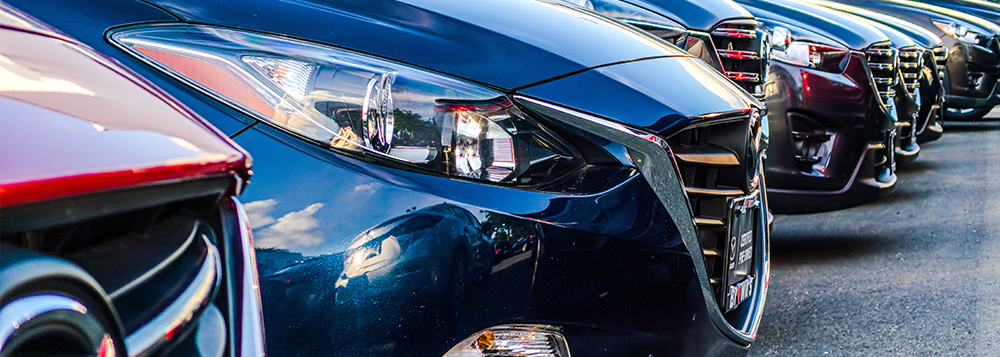What determines the residual value of a car for you as a dealer
Sticking a price on a car when selling it on the second-hand market can be a difficult job. After all, as a dealer, you don’t want to price the car too low and earn less on your car than you could, but overpricing makes no sense either. What factors affect the residual value of your car?

First, there is the economic law of supply and demand. If there is high demand for a certain product and little supply, then scarcity prevails and prices go up. If, on the other hand, supply exceeds demand, prices fall. The price increases in the second-hand market in recent months are a case in point. Due to scarcity in the new car market, more and more buyers are seeking vehicles in the second-hand market. As a result, there is more demand and, at the same time, less supply because there are fewer new cars, resulting in price increases.
Responding to the current market situation is therefore vital. For example, Tesla experienced problems with its Shanghai factory in recent months due to several lockdowns. Production of their Model 3 deteriorated as a result. For instance, the US brand recorded a 25% drop in Europe in terms of registrations. This while the demand for electric cars is high in most European countries. In other words, those who sold their Model 3 on the used market could make even more profit.
Since the market situation naturally depends on the country in question, as a dealer it is an advantage to work with an international platform like OPENLANE Europe. Last year, for instance, used EV prices decreased by 2.6 percentage points in the UK, while they rose by more than 10 percentage points in Austria and Belgium.
The global picture
Speaking of the international market, it is also best to look at the global picture in terms of body type, motorisation and so on. The UK is traditionally the country where most convertibles are sold, in Belgium the station wagon does better than in other European countries. SUVs are popular in all markets, but especially in Scandinavia people specifically want the all-wheel drive models. Finally, the EV market is a lot more mature in Finland or the Netherlands than in Eastern Europe, where the minimal amount of charging stations will also ensure lower interest from locals.
The same goes for local brand preference. An Opel sells better in Germany and the French are more likely to buy a Renault or Peugeot. Then again, in the UK the Ford Fiesta is the most popular car, Dacia does well in Eastern Europe and Belgium is one of the few countries where BMW manages to trump Mercedes in terms of sales. So be sure to check these geographical peculiarities if you are placing your car on the international market. Finally, it is also important to look at the options picture: seat and steering wheel heating is something appealing to buyers, especially in colder regions and safety-related options do especially well in Northern and Western Europe.
Fleet Europe calculated that the second-hand market for more expensive cars is slowing down in Germany. The platform does not expect a price drop until next year at the earliest, but it is best to plan for the long term. In Italy, diesel is experiencing a revival, increasing residual value by more than 1.5%. Finally, in France, the entire second-hand market is slowing down, but here too, it is mainly the more expensive, mainly German cars. The crisis combined with higher prices is causing many French people to postpone their purchases. The only segments where there is music in the air are the hybrid (+35% compared to last year) and electric (+66%) cars.
In other words, having the right assets is crucial, but also playing these assets in the right way: consider the points that are important to your customer, whether they are brand-, engine- or option-related.
Quick wins
Finally, it is not only important to look at the popular models in the different European markets, but also the so-called “fast guys”. After all, some cars do not achieve high sales volumes, but are sold very quickly. This is interesting for your sales performance and stock, of course.
Over the first half of the year, for example, the Volkswagen e-Golf is the electric car selling fastest in Europe. This German EV -which is no longer produced- stays in stock for an average of 16 days, followed by the Opel Corsa and Tesla Model Y. The “fastest” hybrid is the Kia Optima (20 days), followed by the Toyota Auris and the Kia Niro (both around 30 days), according to figures available on Fleet Europe.
Looking at total trade volume, EVs obviously cannot keep up with combustion engine cars. Indeed, in the new car market, they only take up 10% of sales today, and used to take up even less. So with the VW Golf and Polo and the Renault Clio, we see three combustion-engined cars taking the overall top three. But which EVs achieve high sales volume in Europe? Those are the Renault ZOE, Tesla Model 3 and the BMW i3.
Ready to get the best price for your stock cars? Get a free trial and start selling right away.
Curious what our customers think about their collaboration with OPENLANE? Read all about their experience in our customer case studies.
